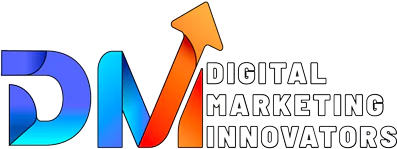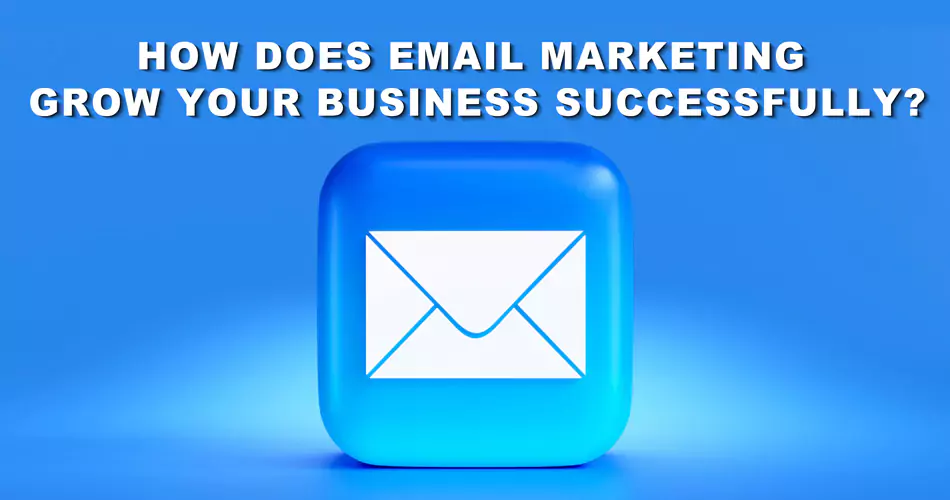Contents
- 1 The Role of Email Marketing in Business Growth
- 2 What are the main types of email marketing?
- 3 Benefits of Email Marketing for Business Growth
- 4 Key Components of a Successful Email Marketing Strategy
- 5 How do I start email marketing for Business Growth?
- 6 Email marketing strategies for business growth?
- 7 Future Trends in Email Marketing for Business Growth
- 8 ROI of Email Marketing in Business Growth
- 9 How Email Marketing Complements Other Marketing Channels
- 10 Case Studies: Successful Email Marketing Campaigns
- 11 Conclusion
- 12 FAQs About Email Marketing
Email marketing is more than just a strategy; it’s a personal invitation into your audience’s inbox, a direct line to their attention and trust. In a world overflowing with fleeting messages and transient content, email stands as a constant, reliable bridge between your brand and your customers. It’s where meaningful connections are nurtured, one thoughtful message at a time.
Every email sent is an opportunity to speak directly to your audience, to share your story, your values, and your vision. It’s a chance to provide value, whether through exclusive offers, insightful content, or personalized recommendations. With email marketing, you’re not just promoting a product; you’re building a relationship, fostering loyalty, and creating a community around your brand.
The beauty of email marketing lies in its ability to be both broad and deeply personal. Through segmentation and automation, you can tailor your messages to resonate with different segments of your audience, ensuring that each recipient feels understood and valued. This personalized approach transforms email from a simple communication tool into a powerful engine of engagement and conversion.
The Role of Email Marketing in Business Growth
Email marketing plays a crucial role in business growth for several reasons:
Building Direct Relationships with Customers: Unlike social media platforms where algorithms often dictate who sees your content, email marketing provides a direct line of communication with your audience. This direct access allows businesses to build and nurture relationships with customers over time.
Enhancing Brand Awareness: Regular email campaigns keep your brand at the top of customers’ minds. Whether it’s through newsletters, promotional emails, or personalized messages, staying consistent helps in enhancing brand recall.
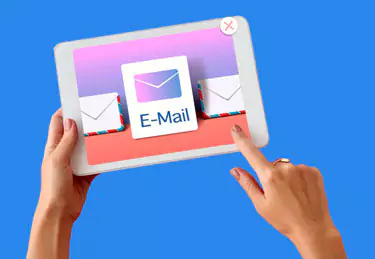
Driving Conversions and Sales: Email marketing is highly effective at driving conversions. Whether you’re launching a new product, offering a discount, or simply reminding customers of abandoned carts, emails can significantly influence purchasing decisions.
What are the main types of email marketing?
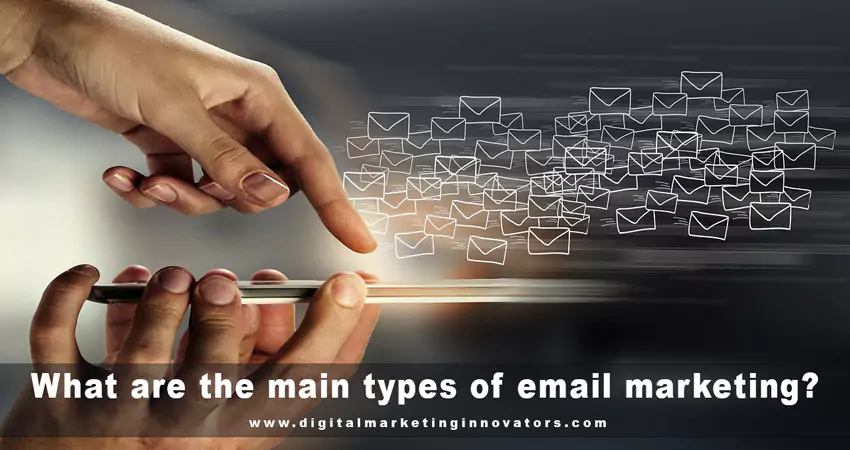
Email marketing comes in various forms, each offering unique ways to engage with your audience and achieve your business goals. Understanding these types can help you craft a strategy that resonates deeply with your recipients. Here’s a breakdown of the key types of email marketing:
Promotional Emails: Promotional emails are designed to capture attention and drive action. They highlight special offers, discounts, or new products and services. Think of these emails as your brand’s chance to shine, showcasing what you have to offer and encouraging your audience to take advantage of time-sensitive deals. When crafted thoughtfully, promotional emails can spark excitement and motivate your subscribers to act.
Transactional Emails: Transactional emails are sent in response to a specific action taken by the recipient. These include order confirmations, shipping notifications, and password resets. While often seen as functional, transactional emails provide an opportunity to reinforce your brand’s voice and build trust through clear, timely, and helpful communication.
Welcome Emails: The first impression counts, and welcome emails are your chance to make a memorable one. Sent when a subscriber joins your list, these emails set the tone for your relationship. They can include a warm greeting, an overview of what to expect, and perhaps a special offer as a thank-you for subscribing. A well-crafted welcome email builds anticipation and starts the relationship on a positive note.
Newsletter Emails:
Newsletters are a cornerstone of ongoing engagement. They provide valuable content such as industry insights, company updates, or curated resources. By delivering consistent, relevant information, newsletters help establish your brand as a trusted source of knowledge and keep your audience engaged over time.
Behavioral Emails:
Behavioral emails are triggered by specific actions or behaviors of your subscribers. For example, if a user abandons a shopping cart, a behavioral email can remind them to complete their purchase. These emails are highly personalized and relevant, often leading to increased conversions by addressing the recipient’s exact needs or actions.
Re-engagement Emails:
Re-engagement emails are designed to rekindle interest from subscribers who have become inactive. They can include special offers, surveys to understand why they’ve disengaged, or content that reignites their interest. These emails are an opportunity to reconnect and remind your audience of the value your brand provides.
Survey Emails:
Survey emails seek feedback from your audience, offering valuable insights into their preferences, experiences, and satisfaction. By asking for their opinions, you demonstrate that you value their input and are committed to improving. Survey emails also provide actionable data to refine your strategies and enhance customer relationships.
Each type of email marketing serves a unique purpose and can be tailored to meet your specific objectives. By leveraging these various approaches, you can create a dynamic and engaging email marketing strategy that resonates with your audience and drives meaningful results.
Benefits of Email Marketing for Business Growth
Several advantages make email marketing an indispensable strategy for business growth:
Cost-Effectiveness: Compared to traditional marketing methods like print or TV ads, email marketing is extremely cost-effective. With a relatively low investment, businesses can reach a large audience and achieve a high return on investment (ROI).
Personalization and Targeting: Email marketing allows for a high degree of personalization. You can segment your audience based on various criteria such as demographics, purchase history, and behavior. This segmentation enables you to send tailored content that resonates with specific groups, thereby increasing engagement and conversion rates.
Measurable Results and Analytics: One of the most significant benefits of email marketing is the ability to track and measure results. With tools that provide analytics on open rates, click-through rates, and conversions, businesses can assess the effectiveness of their campaigns and make data-driven decisions.
Scalability and Reach: Whether you’re a small business or a large enterprise, email marketing scales with your business. You can start with a modest subscriber list and grow it over time, expanding your reach and impact as your business grows.
Key Components of a Successful Email Marketing Strategy
To maximize the benefits of email marketing, it’s essential to focus on several key components:
Understanding Your Audience: Knowing who your audience is and what they want is the foundation of any successful email campaign. Use data and analytics to understand their preferences, behaviors, and pain points.
Crafting Compelling Content: The content of your emails should be engaging, valuable, and relevant to your audience. Whether it’s a promotional offer, a newsletter, or a product update, the content should resonate with your readers and compel them to take action.
Segmentation and Targeting: As mentioned earlier, segmentation is crucial. By dividing your audience into smaller groups based on specific criteria, you can deliver more targeted and effective email campaigns.
Timing and Frequency: Sending too many emails can annoy your subscribers, while too few can result in missed opportunities. Finding the right balance in timing and frequency is key to maintaining engagement without overwhelming your audience.
How do I start email marketing for Business Growth?
Starting email marketing can be a game-changer for your business, a pathway to deeper connections with your audience, and a source of transformative growth. Here’s a professional yet emotionally engaging guide to help you embark on this journey:
Define Your Goals: Begin with clarity. Ask yourself what you hope to achieve with your email marketing campaign. Are you looking to drive sales, build brand loyalty, or nurture leads? Your goals will shape your strategy, guiding you through the process with purpose and precision.

Build Your Audience: Your audience is the heart of your email marketing efforts. Focus on gathering a list of subscribers who are genuinely interested in your offerings. Use sign-up forms on your website, social media channels, and at events to build this list. Remember, quality trumps quantity—engage with those who are truly invested in what you have to offer.
Craft Compelling Content: Content is where you truly connect with your audience. Create emails that resonate emotionally and provide value. Share stories, insights, and offers that speak directly to their needs and desires. Personalize your messages to make each recipient feel seen and valued.
Choose the Right Email Marketing Platform: Select a platform that aligns with your needs. Look for features such as automation, segmentation, and analytics. The right tool will streamline your process, allowing you to focus on what matters most—crafting messages that make an impact.
Design Stunning Emails: Visual appeal plays a significant role in engagement. Design your emails with a professional touch, ensuring they are visually attractive and easy to read. Incorporate your brand’s colors, fonts, and imagery to create a cohesive and memorable experience.
Implement Automation: Leverage automation to send timely and relevant messages. Set up welcome emails, follow-ups, and drip campaigns to nurture your leads and maintain engagement. Automation allows you to stay connected with your audience without overwhelming yourself.
Test and Optimize: Continuous improvement is key to success. Test different subject lines, designs, and content to see what resonates best with your audience. Use analytics to track open rates, click-through rates, and conversions. This data will guide your adjustments, helping you refine your approach for better results.
Stay Compliant: Ensure you adhere to email marketing regulations, such as GDPR and CAN-SPAM. Provide clear opt-in options and easy unsubscribe processes to build trust and maintain a positive relationship with your subscribers.
Analyze and Reflect: Regularly review your email marketing performance. Reflect on what’s working and what needs improvement. Celebrate your successes and learn from your challenges to continually enhance your strategy.
Email marketing is more than just a tool—it’s a means to foster meaningful connections and drive your business forward. Approach it with passion and dedication, and you’ll find it a powerful ally in your journey to success.
Email marketing strategies for business growth?
Here are seven powerful email marketing strategies that can help you forge deeper connections with your audience and drive meaningful results. Embrace these strategies with heart and purpose, and watch your email marketing efforts transform:
Personalization: Imagine receiving an email that speaks directly to you, addressing your unique needs and interests. Personalization turns this vision into reality. Use data to tailor your emails—include the recipient’s name, recommend products based on past behavior, and craft messages that resonate with their individual preferences. This approach not only captures attention but fosters a genuine connection with your audience.
Segmentation: Segmenting your email list allows you to deliver content that truly matters to each group of subscribers. Divide your audience based on demographics, purchase history, or engagement levels. By sending targeted emails that address specific needs or interests, you show your audience that you understand them, leading to higher engagement and stronger relationships.
Automation: Imagine having a personal assistant who sends the right message at the right time. Automation makes this possible by setting up triggered emails that respond to specific actions or milestones. Whether it’s a welcome email for new subscribers or a follow-up after a purchase, automation ensures timely and relevant communication, enhancing the customer experience and driving conversions.
A/B Testing: A/B testing is your opportunity to experiment and refine. Test different elements of your emails—subject lines, images, call-to-action buttons—to discover what resonates most with your audience. By analyzing the results, you can make informed decisions and continuously improve your email campaigns, ensuring they always hit the mark.
Compelling Subject Lines: Your subject line is the first impression your email makes. Craft subject lines that are intriguing, relevant, and convey a sense of urgency or value. A great subject line can make the difference between an email that’s opened and one that’s ignored, so invest time in making it captivating and compelling.
Engaging Content: Content is the heartbeat of your emails. Create messages that inspire, inform, and engage. Share stories that resonate with your audience’s emotions, offer valuable insights, and include clear calls to action. Well-crafted content not only captures attention but also encourages readers to take the next step with your brand.
Analytics and Reporting: Analytics provide the roadmap to success. Regularly review your email performance metrics—open rates, click-through rates, conversion rates—to understand what’s working and where there’s room for improvement. Use these insights to refine your strategy, adapt to changing audience preferences, and continuously enhance your email marketing efforts.
Embrace these strategies with enthusiasm and dedication, and you’ll unlock the true potential of your email marketing campaigns. Each strategy offers a pathway to creating more meaningful connections and driving greater success for your business.
Future Trends in Email Marketing for Business Growth
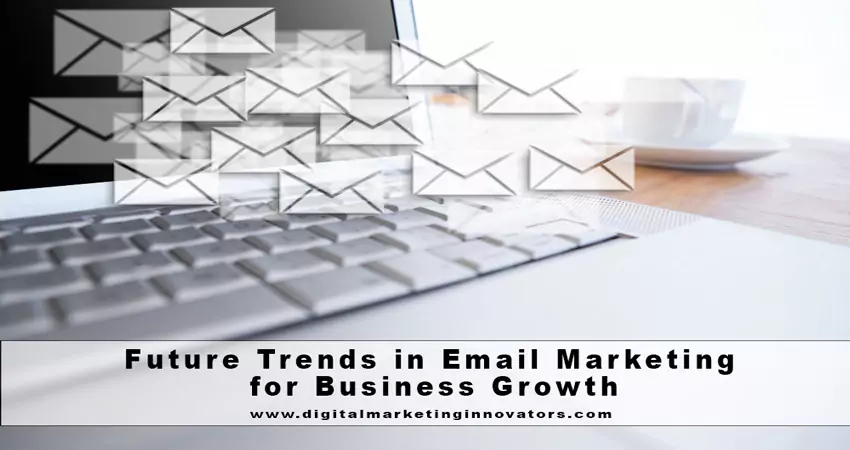
Email marketing is not static; it continues to evolve as technology and consumer behaviors change. Here are some trends that will shape the future of email marketing:
Automation and AI: The use of automation and artificial intelligence (AI) is transforming how businesses approach email marketing. Automation allows for the creation of complex, multi-step campaigns that trigger based on specific user actions, such as cart abandonment or browsing behavior. AI can further enhance these efforts by analyzing large datasets to predict customer preferences, optimize send times, and even craft personalized content.
Interactive Emails: Interactive emails that allow users to engage without leaving their inboxes are becoming increasingly popular. These emails can include elements like embedded surveys, quizzes, or even shopping carts. By making emails more interactive, businesses can increase engagement and reduce friction in the customer journey.
Increased Focus on Data Privacy: With growing concerns over data privacy and stricter regulations like GDPR, businesses must prioritize transparency and consent in their email marketing practices. Consumers are more aware of how their data is used, and they expect businesses to respect their privacy. This trend will likely continue, pushing companies to adopt more secure and ethical email practices.
Hyper-Personalization: While personalization has been a staple of email marketing for years, the future will see even more advanced forms of it. Hyper-personalization goes beyond just using a recipient’s name; it involves delivering highly tailored content based on real-time data, such as location, device usage, and past interactions. This level of personalization can significantly increase engagement and conversions.
Visual Storytelling: As attention spans shorten, the ability to tell compelling stories through visuals in emails will become increasingly important. Expect to see more brands using dynamic images, GIFs, and even videos in their emails to convey their messages quickly and effectively.
ROI of Email Marketing in Business Growth
Email marketing consistently delivers a high return on investment (ROI), making it a cornerstone of any business’s marketing strategy.
Calculating ROI: To calculate the ROI of your email marketing efforts, compare the revenue generated from your campaigns against the costs involved. This includes not just the direct costs of sending emails but also the time spent on planning, content creation, and analytics. Typically, email marketing boasts an average ROI of $36 for every $1 spent, making it one of the most cost-effective marketing channels available.
Comparing ROI with Other Marketing Channels: When compared to other digital marketing channels like social media, pay-per-click (PPC) advertising, or content marketing, email marketing often delivers the highest ROI. This is largely due to its direct nature, lower costs, and ability to target specific audiences with precision.
Common Challenges in Email Marketing
While email marketing is effective, it does come with its challenges:
Deliverability Issues: Ensuring that your emails reach your subscribers’ inboxes, rather than their spam folders, is a common challenge. This requires maintaining a clean email list, avoiding spammy content, and using reputable email service providers.
Avoiding Spam Filters: To avoid spam filters, ensure that your emails comply with best practices, such as including a physical address, using a recognizable sender name, and avoiding trigger words that might flag your email as spam.
Managing Unsubscribes and Bounces: It’s natural for some subscribers to unsubscribe or for emails to bounce. Regularly cleaning your email list and respecting unsubscribe requests are essential to maintaining a healthy email marketing strategy.
How Email Marketing Complements Other Marketing Channels
Email marketing is like the glue that binds your entire marketing strategy together. It doesn’t just exist in isolation—it amplifies the impact of your other marketing efforts, creating a harmonious and cohesive experience for your audience. When integrated effectively with social media, content marketing, and SEO, email marketing can be the catalyst that drives your business forward, ensuring every piece of your marketing puzzle fits perfectly together.
Integration with Social Media
Imagine your email subscribers as the inner circle of your brand’s community—those who’ve given you direct access to their inboxes because they care about what you have to say. But your social media followers? They’re like the lively crowd at a party, always ready to engage, share, and spread the word. When these two groups come together, magic happens.
By promoting your email campaigns on social media, you invite the broader audience into your inner circle. A simple post encouraging your followers to subscribe to your email list can open the door to deeper connections. Perhaps you’re offering an exclusive discount or early access to a new product—let your social media fans know that the real goodies are just one click away in their inbox.
On the flip side, your emails can drive your subscribers back to your social media channels, keeping the conversation alive and vibrant. Include links to your latest Instagram post or Twitter thread in your emails, encouraging recipients to join the conversation, share their thoughts, and stay connected. It’s like a dance where each step complements the other, creating a seamless flow between your email and social media efforts.
Combining Email with Content Marketing
Think of your content—blog posts, videos, infographics—as the stories that build your brand’s identity. They educate, entertain, and engage your audience, showcasing your expertise and personality. But even the best stories need an audience, and that’s where email marketing steps in.
When you send an email highlighting your latest blog post or video, you’re not just driving traffic to your website; you’re nurturing relationships. You’re saying, “I know you’ll find this valuable because I understand what you care about.” It’s a personal invitation to explore, learn, and engage further with your brand.
This strategy is especially powerful because it positions your emails as a trusted source of valuable content. Over time, subscribers will start to anticipate your emails, knowing they’re filled with insights, tips, or stories that matter to them. And every click that takes them to your website strengthens your authority, builds trust, and brings them one step closer to becoming loyal customers.
Using Email to Support SEO Efforts
SEO might seem like a world of algorithms and keywords, but at its core, it’s about human connection—helping people find what they’re looking for. And email marketing is one of the most human ways to connect with your audience.
Every time you share a blog post, case study, or article via email, you’re driving traffic to your website. This influx of engaged visitors signals to search engines that your content is valuable, relevant, and worthy of higher rankings. It’s like giving your SEO a friendly nudge, helping it reach its full potential.
But the benefits don’t stop there. When people find your content through an email and spend time reading, sharing, or commenting on it, it tells search engines that your site is a hub of activity and engagement. This can improve your search rankings, making it easier for new visitors to find you organically.
Moreover, when your email content is compelling enough that subscribers share it with their networks, you’re expanding your reach beyond your initial audience. This can lead to more backlinks, increased website authority, and ultimately, better SEO performance. It’s a beautiful cycle where each effort feeds into the next, creating a marketing strategy that’s stronger, smarter, and more effective.
In essence, email marketing is the thread that weaves through all your marketing channels, tying them together in a way that amplifies their individual strengths. It’s not just about sending emails—it’s about creating a unified experience for your audience, where every touchpoint reinforces your brand message and moves your business closer to its goals. When email marketing complements your social media, content marketing, and SEO efforts, you’re not just connecting with your audience—you’re building relationships that last.
Case Studies: Successful Email Marketing Campaigns
Real-world examples often speak louder than theory, showing us the tangible impact of well-executed email marketing strategies. These stories are not just about numbers—they’re about businesses connecting with their audiences, building relationships, and ultimately, achieving their goals. Let’s dive into three inspiring case studies that highlight the power of email marketing
A Small Business Success Email Marketing Story: The Local Bakery
Imagine a cozy, family-owned bakery nestled in the heart of a small town. This bakery is known for its delicious pastries and warm, welcoming atmosphere, but like many small businesses, it faces the challenge of standing out in a crowded market. The owners knew they needed to connect more deeply with their community to drive foot traffic and increase orders, especially during the busy holiday season. So, they turned to email marketing.
They started by collecting email addresses from customers who visited the store, offering a small discount on their next purchase in exchange for joining the bakery’s mailing list. As the list grew, the bakery began sending out weekly emails, each one carefully crafted to reflect the bakery’s charm and personality. These emails featured mouth-watering images of seasonal specials—pumpkin spice scones in the fall, peppermint bark brownies in the winter—paired with stories about the inspiration behind each recipe.
But they didn’t stop there. The bakery also used email to promote limited-time offers and special events, such as holiday baking classes and pre-order opportunities for Thanksgiving pies. The results were nothing short of amazing. Not only did the bakery see a significant increase in in-store visits, but online orders also skyrocketed. Customers were excited to receive these emails—they felt like they were part of something special, a close-knit community centered around the love of good food.
This small bakery’s success shows how email marketing, when done right, can turn casual customers into loyal fans, driving both foot traffic and online sales in a meaningful way.
Email Marketing in E-Commerce: The Fashion Retailer
In the fast-paced world of e-commerce, standing out requires more than just a great product—you need to capture your audience’s attention and hold onto it. One online fashion retailer, known for its trendy clothing and accessories, faced this challenge head-on. They realized that while they were attracting a lot of traffic to their website, many visitors were leaving without making a purchase. The solution? A personalized email marketing campaign that spoke directly to each customer’s unique style.
The retailer began by analyzing browsing and purchase behavior to understand what their customers were interested in. Armed with this data, they segmented their email list into different groups based on factors like past purchases, browsing history, and even the time of day customers were most likely to shop.
With this level of insight, the retailer crafted personalized emails that felt tailor-made for each recipient. For example, if a customer had recently browsed through summer dresses but hadn’t made a purchase, they might receive an email featuring a curated selection of dresses, styled outfits, and a limited-time discount on those items. These emails weren’t just selling products—they were offering inspiration and solutions, making it easy for customers to find exactly what they were looking for.
The impact was immediate and powerful. The personalized approach led to a 20% increase in sales, with customers feeling more connected to the brand and more inclined to make a purchase. This case study highlights how personalization in email marketing can transform an e-commerce business, turning casual browsers into enthusiastic buyers.
B2B Email Marketing Success: The Software Company
In the B2B world, building relationships and nurturing leads is critical, but it’s often a long and complex process. One software company, specializing in business solutions for mid-sized enterprises, understood this challenge well. They knew that their potential customers weren’t likely to make a purchase after just one interaction—they needed to be educated, reassured, and guided through the decision-making process.
To achieve this, the company implemented a targeted email marketing campaign designed to nurture leads over time. The campaign was carefully segmented based on where each lead was in the sales funnel. New leads received educational content about industry trends and the benefits of the software, while leads further down the funnel received case studies, testimonials, and detailed product demonstrations.
Each email was designed to build trust and demonstrate the software’s value. The company also used automated follow-ups to ensure that no lead was left behind, providing timely and relevant content that addressed the specific concerns of each prospect.
The results were impressive. The targeted email campaigns led to a 15% higher conversion rate compared to other marketing channels the company had used. This success wasn’t just about selling software—it was about guiding potential customers on a journey, providing them with the information and reassurance they needed to make an informed decision.
This case study underscores the power of email marketing in the B2B sector, where nurturing leads with tailored, relevant content can make all the difference in closing a deal.
These case studies illustrate the diverse ways in which email marketing can be leveraged across different industries. Whether it’s a small bakery connecting with its community, an e-commerce retailer personalizing the shopping experience, or a B2B company nurturing leads, the common thread is clear: when businesses use email marketing to connect with their audience on a personal level, the results can be transformative. These real-world examples show that with creativity, strategy, and a deep understanding of your audience, email marketing can drive significant business growth and build lasting relationships.
Conclusion
In conclusion, email marketing remains a highly effective strategy for business growth. Its ability to foster direct communication, enhance brand awareness, and drive conversions makes it indispensable in the modern marketing toolkit. With the right approach—leveraging automation, personalization, and best practices—businesses can harness the full potential of email marketing to achieve significant growth.
As we look to the future, trends such as AI, interactive content, and increased data privacy will continue to shape the landscape of email marketing, ensuring it remains a vital tool for businesses of all sizes. For those willing to invest the time and resources into a well-planned email marketing strategy, the rewards can be substantial, offering a scalable, measurable, and highly personalized way to connect with customers and drive business success.
FAQs About Email Marketing
What industries benefit most from email marketing?
Email marketing is highly versatile and can be beneficial for almost any industry. However, e-commerce, retail, technology, and B2B sectors often see particularly high returns due to their ability to leverage personalized and targeted campaigns.
What are the key metrics to track in email marketing?
Important metrics to track include open rate, click-through rate (CTR), conversion rate, bounce rate, and unsubscribe rate. These metrics provide insights into how well your emails are performing and where there might be room for improvement.
How can small businesses start with email marketing?
A small businesses can start with email marketing by choosing an easy-to-use platform like Mailchimp or Constant Contact. Begin by building a subscriber list, segmenting your audience, and crafting simple, relevant content. Consistency is key—regularly sending emails will help build a relationship with your audience over time.
Is email marketing still effective in current year and beyond?
Yes, email marketing remains highly effective in current year and will continue to be a valuable tool for business growth. With the rise of automation, AI, and hyper-personalization, email marketing is becoming even more powerful, offering businesses new ways to connect with their audience on a deeper level.
What is the difference between B2B and B2C email marketing?
B2B (business-to-business) email marketing focuses on building relationships and nurturing leads over time, often involving longer sales cycles and more detailed content such as case studies, whitepapers, and industry insights. B2C (business-to-consumer) email marketing, on the other hand, is typically more focused on driving immediate sales, using promotions, discounts, and personalized product recommendations to appeal directly to consumers. The tone and style of communication also differ, with B2B being more formal and B2C more casual and engaging.
Can email marketing be integrated with other digital marketing strategies?
Yes, email marketing can and should be integrated with other digital marketing strategies for a holistic approach. For example, you can use email marketing to drive traffic to your social media profiles or to promote new blog posts and content on your website. Similarly, you can retarget website visitors with email campaigns, or use data from your email campaigns to inform your SEO and content marketing strategies. This cross-channel synergy helps create a consistent and cohesive brand experience across all touchpoints.
